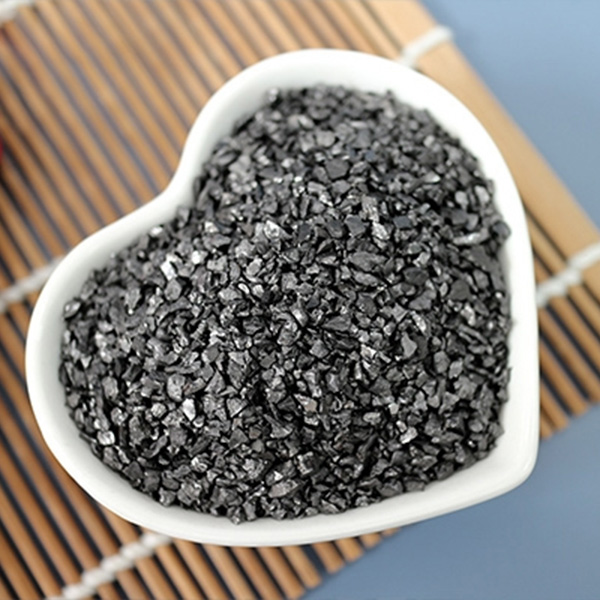Factory Price Carbon Petroleum Coke - How to choose high-quality steelmaking recarburizer – Yunai
Factory Price Carbon Petroleum Coke - How to choose high-quality steelmaking recarburizer – Yunai Detail:
In the smelting process, due to improper batching or charging and excessive decarburization, sometimes the carbon content in the steel or iron does not meet the expected requirements. At this time, carbon should be added to the steel or molten iron. The main materials usually used for carbonization are anthracite powder, carbonized pig iron, electrode powder, petroleum coke powder, pitch coke, charcoal powder and coke powder. The requirements for recarburizers are that the higher the fixed carbon content, the better, and the lower the content of harmful impurities such as ash, volatile matter and sulfur, the better, so as not to pollute the steel.
The smelting of castings uses high-quality recarburizers after high-temperature calcination of petroleum coke with few impurities, which is the most important link in the recarburization process. The quality of the recarburizer determines the quality of the molten iron, and also determines whether a good graphitization effect can be obtained. In short, reducing molten iron shrinkage and recarburizers play a pivotal role.
When the whole scrap steel is smelted in an electric furnace, the graphitized recarburizer is preferred. After the high-temperature graphitization treatment, the carbon atoms can change from the original disordered arrangement to the flake arrangement, and the flake graphite can become graphite-like. The best core of the core, in order to facilitate the promotion of graphitization. Therefore, we should choose a recarburizer that has undergone high-temperature graphitization. Because of the high temperature graphitization treatment, the sulfur content is reduced by the escape of SO2 gas. Therefore, high-quality recarburizers contain very low sulfur content, w(s) is generally less than 0.05%, and better w(s) is even less than 0.03%. At the same time, this is also an indirect indicator to judge whether it has undergone high temperature graphitization treatment and whether the graphitization is good. If the selected recarburizer has not undergone high-temperature graphitization treatment, the nucleation ability of graphite will be greatly reduced, and the graphitization ability will be weakened. Even if the same amount of carbon can be achieved, the results are completely different.
The so-called recarburizer is to effectively increase the carbon content in the molten iron after adding, so the fixed carbon content of the recarburizer must not be too low, otherwise to achieve a certain carbon content, it is necessary to add a relatively high carbon content. More samples of recarburizer will undoubtedly increase the amount of other unfavorable elements in the recarburizer, so that the molten iron cannot obtain better benefits.
Low sulfur, nitrogen and hydrogen elements are the key to preventing nitrogen pores in castings, so the lower the nitrogen content of the recarburizer, the better. Other indicators of the recarburizer, such as moisture, ash, and volatile matter, the lower the amount of fixed carbon, the higher the amount of fixed carbon, so the higher the amount of fixed carbon, the content of these harmful components must not be high.
According to different smelting methods, furnace types and sizes of smelting furnaces, it is also very important to select the appropriate particle size of the recarburizer, which can effectively improve the absorption rate and absorption rate of the molten iron to the recarburizer, and avoid the problem of excessively small particle size. Caused by oxidative burnout of recarburizers.
Its particle size is preferably: 100kg furnace less than 10mm, 500kg furnace less than 15mm, 1.5 ton furnace less than 20mm, 20 ton furnace less than 30mm. In converter smelting, when high carbon steel is used, a recarburizer with few impurities is used. The requirements for recarburizers for top-blown converter steelmaking are high fixed carbon, low ash, volatile and sulfur, phosphorus, nitrogen and other impurities, dry, clean, and moderate particle size. Its fixed carbon C ≥ 96%, volatile matter ≤ 1.0%, S ≤ 0.5%, moisture ≤ 0.5%, particle size 1-5mm. If the particle size is too fine, it is easy to burn, and if it is too coarse, it floats on the surface of molten steel and is not easily absorbed by molten steel. For induction furnaces, the particle size is 0.2-6mm, of which steel and other black gold particles are 1.4-9.5mm, high carbon steel requires low nitrogen, and the particle size is 0.5-5mm, etc. The specific needs are based on the specific furnace type to smelt the workpiece The types and other details of the specific judgment and selection.
Product detail pictures:


Related Product Guide:
We provide fantastic energy in high quality and advancement,merchandising,gross sales and marketing and operation for Factory Price Carbon Petroleum Coke - How to choose high-quality steelmaking recarburizer – Yunai , The product will supply to all over the world, such as: Guatemala, Chile, Provence, We follow up the career and aspiration of our elder generation, and we are eager to open up a new prospect in this field, We insist on Integrity, Profession, Win-win Cooperation, because we have a strong backup, that are excellent partners with advanced manufacturing lines, abundant technical strength, standard inspection system and good production capacity.
The factory has advanced equipment, experienced staffs and good management level, so product quality had assurance, this cooperation is very relaxed and happy!




 Quote Now
Quote Now


